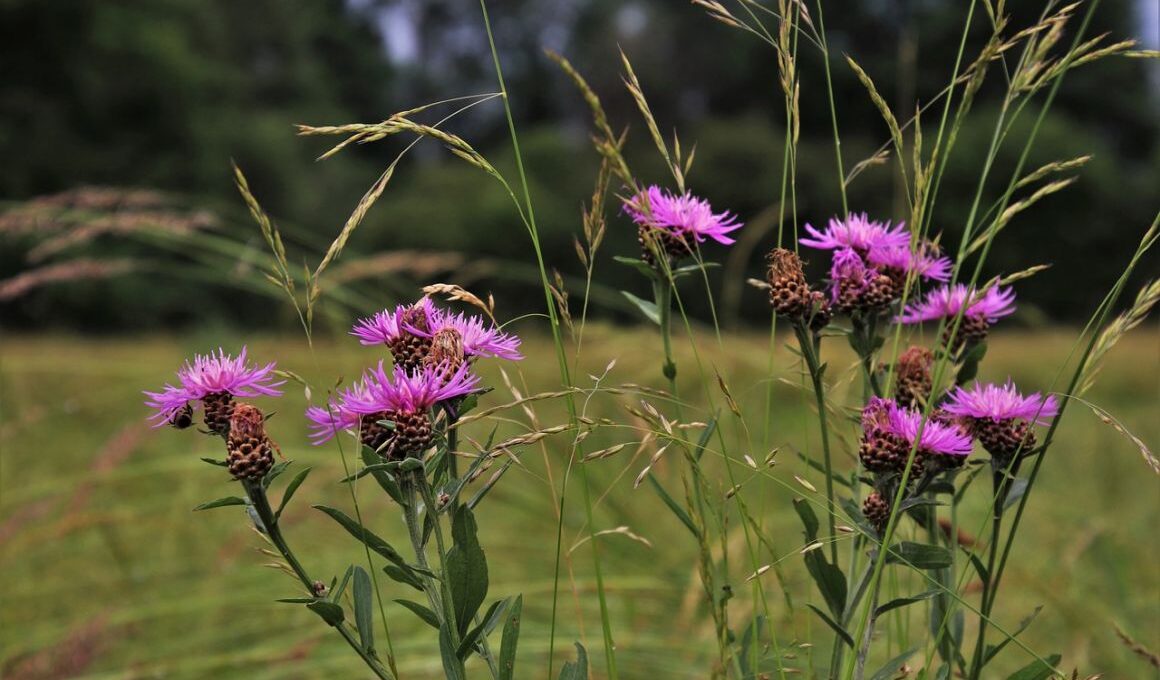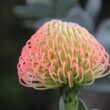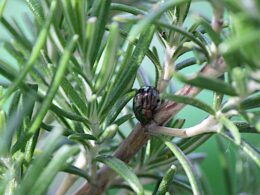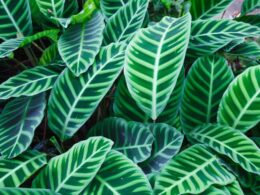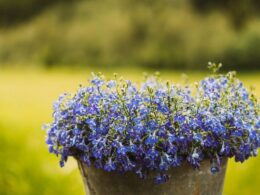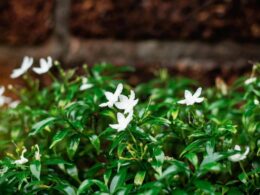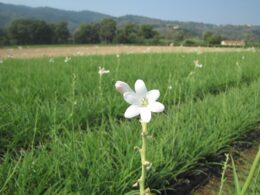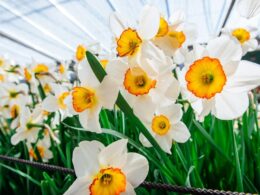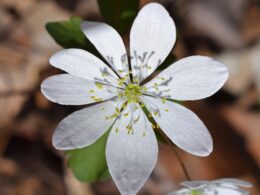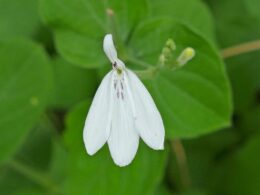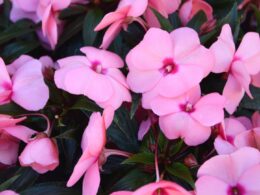This plant guide will introduce you to the most common types of thistle flower and provide tips on how to care for them. So if you’re curious about these unique plants, keep reading!
Thistle Flower: Morphology and Types
Thistle flowers are one of the most recognizable flower types due to their unique shape. The typical thistle flower has a central disk surrounded by sharp, spiny petals. They can be found in a wide range of colors, including white, yellow, pink, purple, and blue, but purple flowers are the most popular. The stems of these plants are prickly (covered in spines), which can make them difficult to handle.
These flower heads provide nectar for many types of pollinators, including bees, wasps, and butterflies. The flowers are also an important food source for many birds and small mammals. They are perennials and they bloom in summer.
There are many species of thistle plants, and they can be classified into two main groups: Cirsium and Onopordum. The first group is the most common type, and it is native to Europe, Asia, and North America. Onopordum thistles are less common, and they are found in Southern Europe and Asia.
Thistles are often considered to be weeds, and they can cause problems in agricultural fields. However, some thistle species are grown as ornamental plants. The Scottish thistle (Onopordum acanthium) is the national flower of Scotland, and it is often used in Scotch floral arrangements.
Is the Thistle Flower Invasive?
Thistle flowers are certainly eye-catching, with their pretty purple blooms. But did you know that they can also be quite invasive? If you’re thinking of planting them in your garden, it’s important to be aware that they can be troublesome.
There are more than 1,600 species of thistle in the world, and many of them are considered weeds. In fact, some thistles are so aggressive that they’re listed as noxious weeds in various countries!
So what makes a thistle flower so fast-growing? For one thing, the plant produces a lot of seeds. Each head can contain up to 2,000 thistle seeds! Once these seeds are dispersed, they can easily take root and start new thistle plants. Thistles also have a deep taproot system that allows them to thrive in poor-quality soil. This means that they can easily outcompete other plants for resources. What’s more, thistles are very tolerant of harsh conditions. They can withstand drought and cold temperatures, as well as heavy grazing from animals.
All of these factors make it very difficult to control thistle populations once they’ve become established.
Most Popular Types of Cirsium Plants
There are a number of thistle species, and the most popular including:
- Cirsium arvense, also known as creeping thistle or Canada thistle, is a herbaceous perennial plant in the Asteraceae family. It is native to Europe and Asia, but has been introduced to North America, where it is now considered an invasive species. The stem is erect, branched in the upper part, and covered in spines. The leaves are alternate, lanceolate to oblong, with a margin that is deeply lobed or pinnatifid, with spines.
- Cirsium vulgare, also known as the common thistle or bull thistle. It is native to Europe, Asia, and North Africa, but has been introduced to other parts of the world, including Australia and North America. The plant is a biennial herb that grows to a height of 3-8 feet. The leaves are alternate, oblong-lanceolate, and have prickly margins. The flowers of these tall thistles are pink or purple, and borne in capitula. The fruit is an achene that is dispersed by the wind on the pastures and meadows.
Why Is the Thistle a Symbol of Scotland?
The plant has been associated with Scotland for centuries, and it is believed to be a symbol of strength and courage.
There are many legends about the origin of this plant as a symbol of Scotland. One story says that during a battle between the Scots and the Vikings, a Scottish warrior stepped on a thistle flower, which caused him to cry out in pain. This alerted the other Scots to the Viking presence, and they were able to defeat them.





